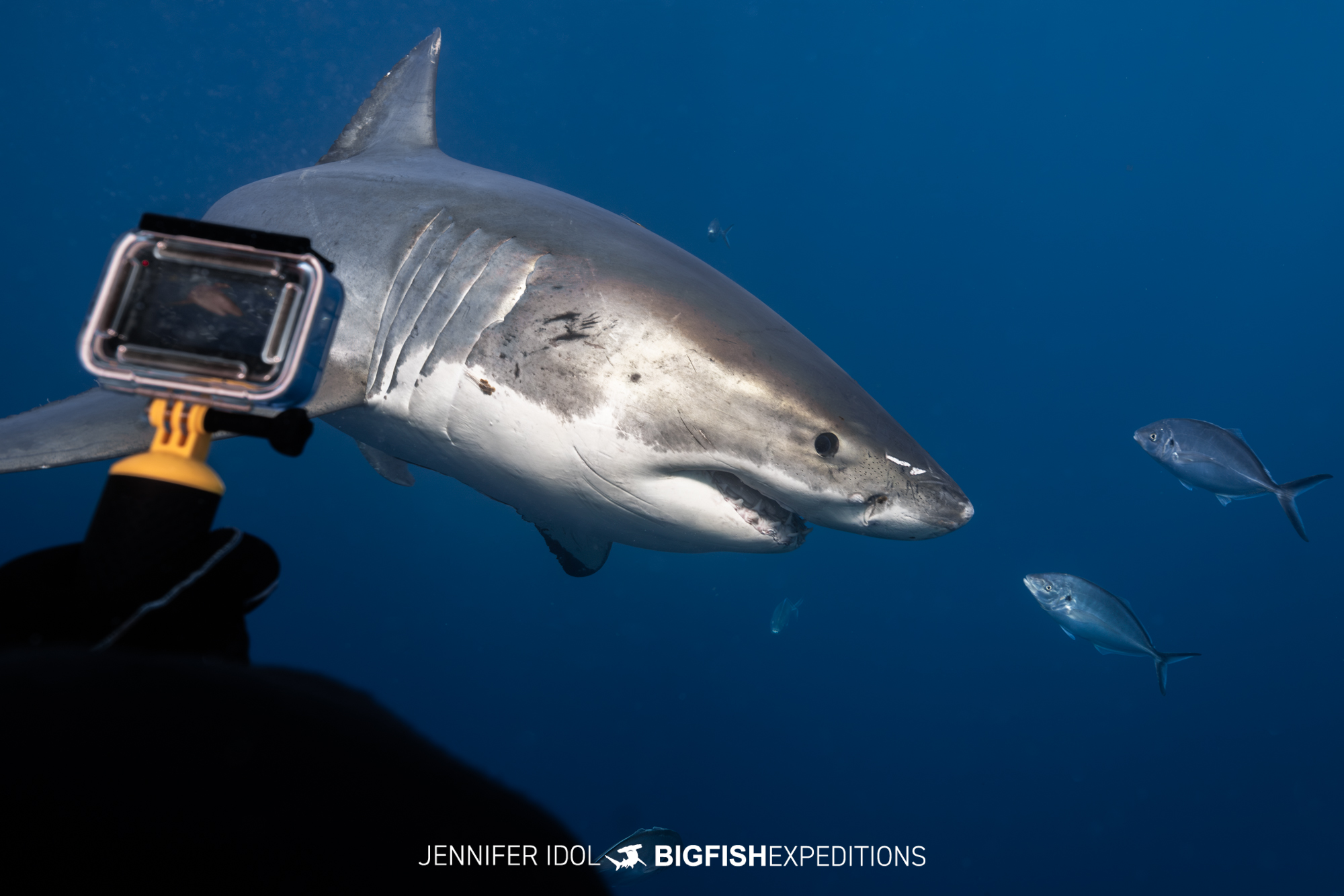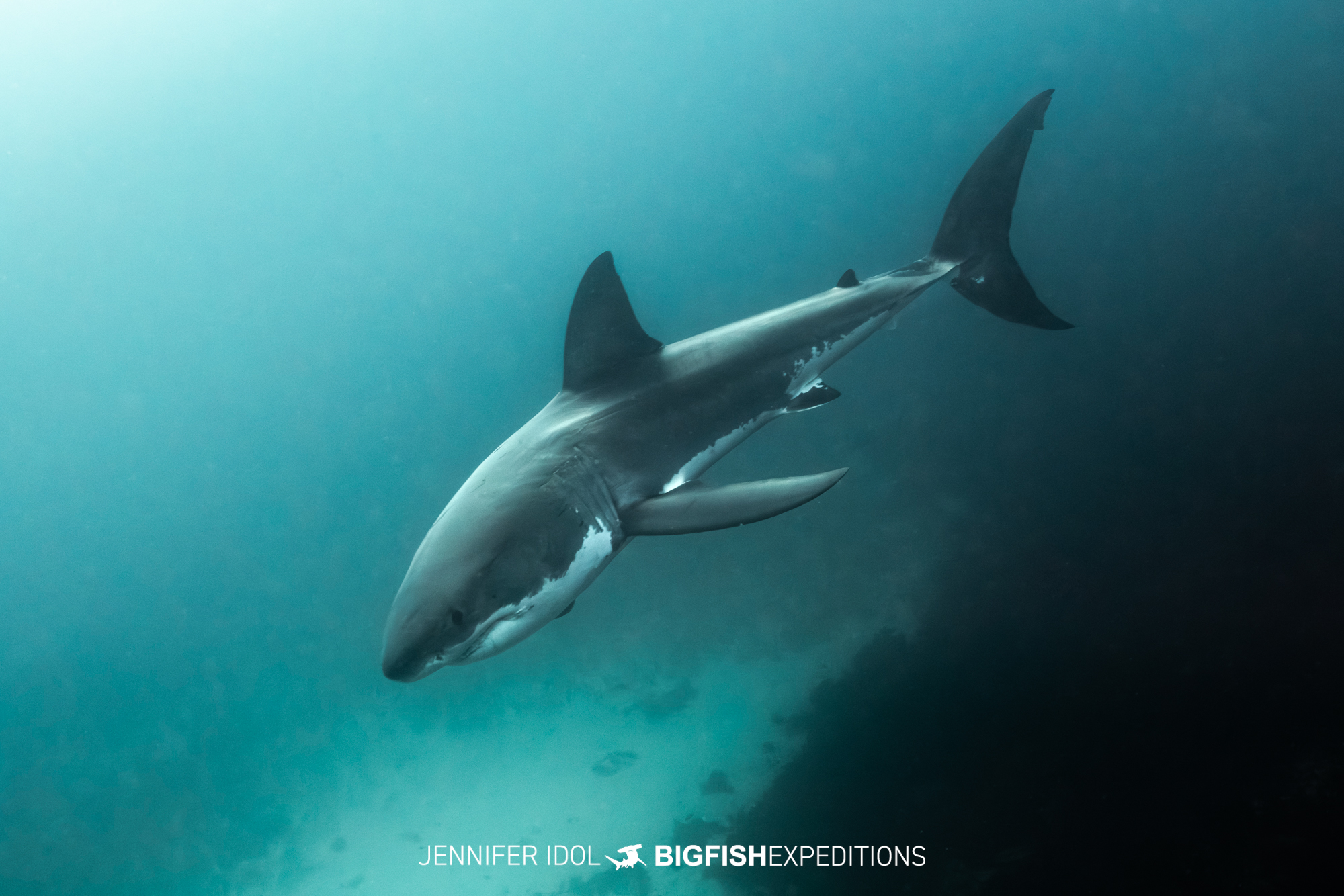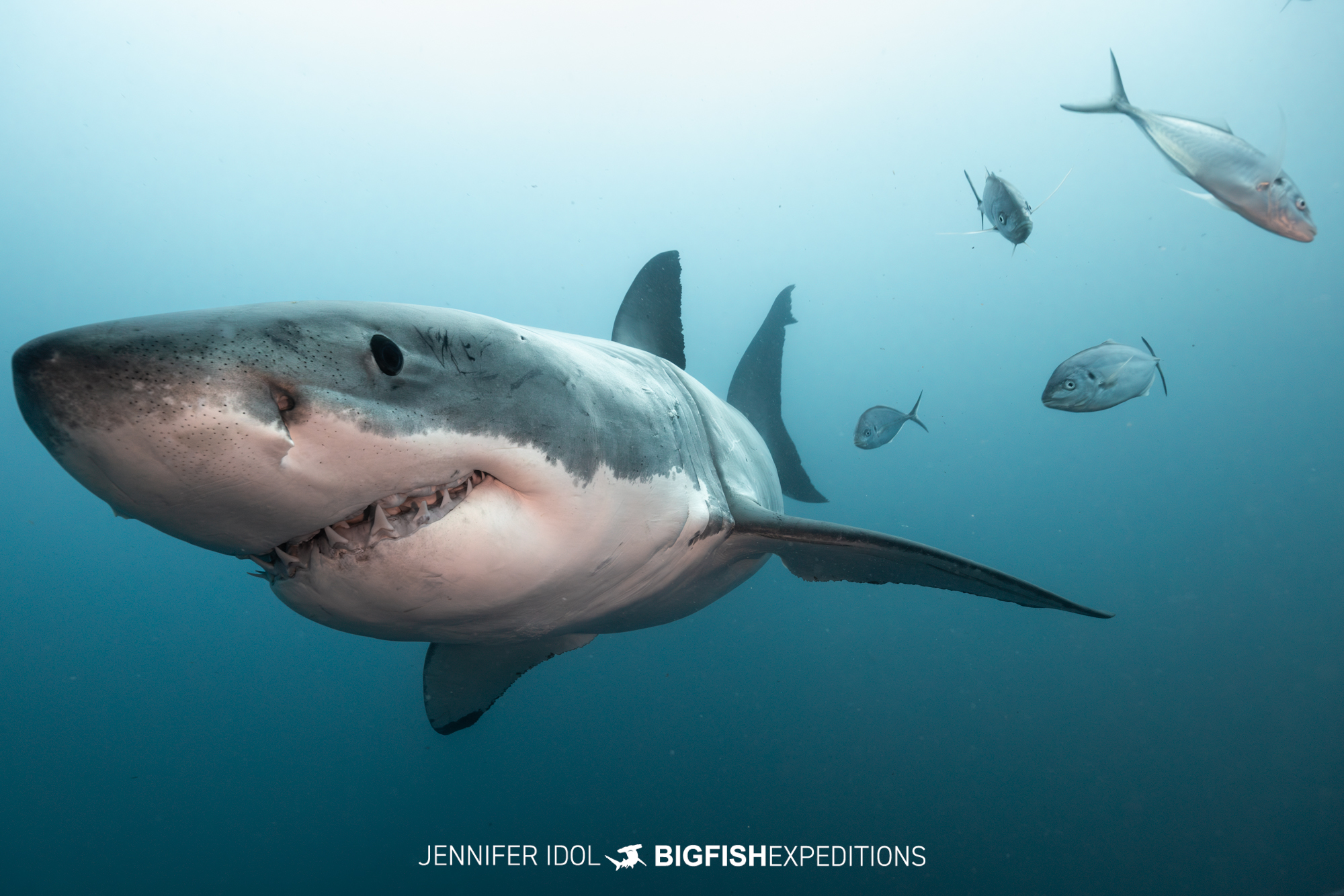
Majestic encounters
Observing great white sharks in their natural habitat is an unparalleled experience. These apex predators, often misunderstood, displayed behaviors during our expedition that challenged common misconceptions. Rather than exhibiting aggression, many sharks cruised calmly along the seafloor, only approaching our cages out of apparent curiosity.
Our inaugural trips to the Neptune Islands were strategically scheduled during a season known for the presence of large female great whites. This timing offered a balance between favorable water temperatures, visibility, and shark activity. Across both trips, guests enjoyed daily shark sightings, with some dives featuring up to five individuals and as many as six different sharks observed in a single day.
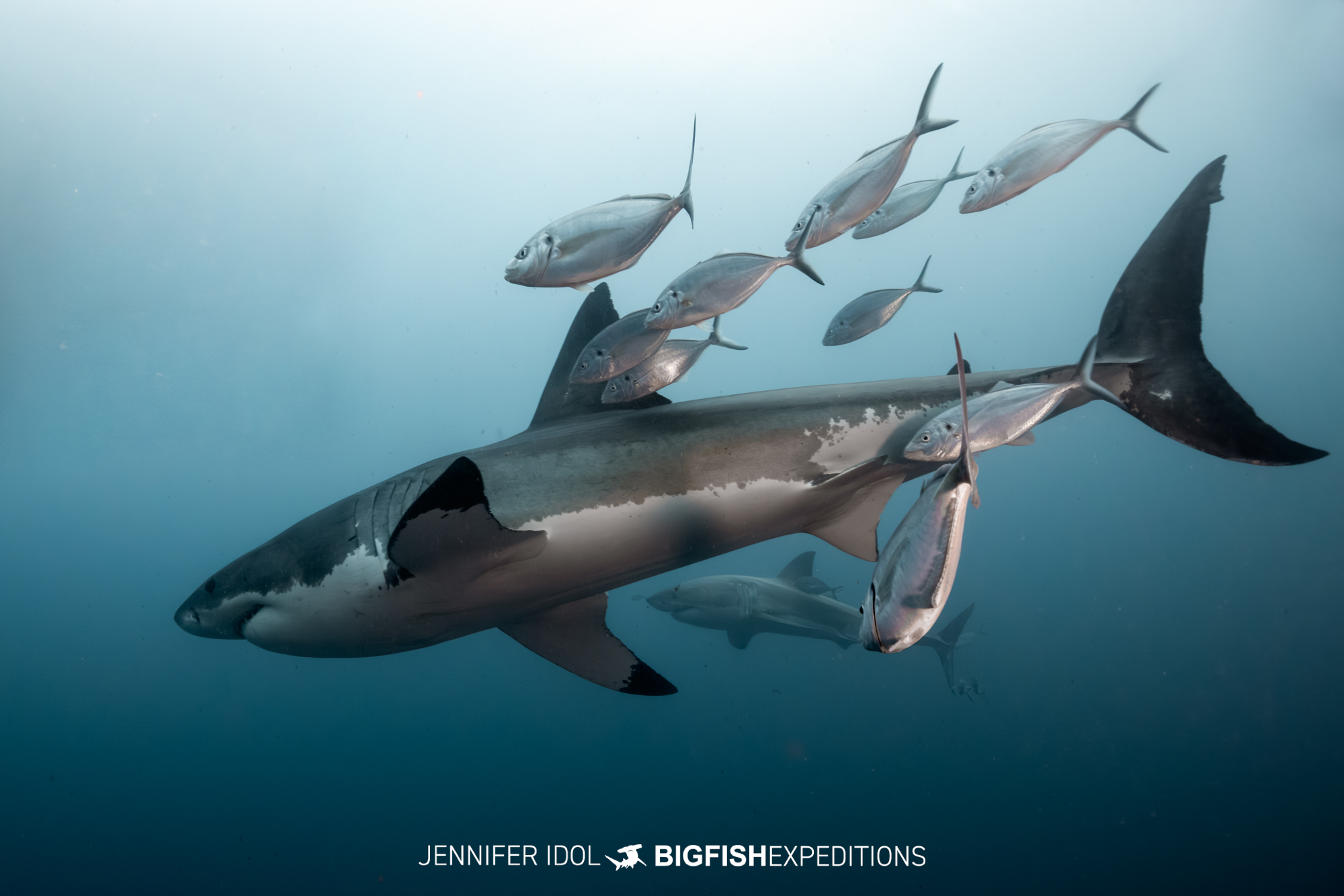
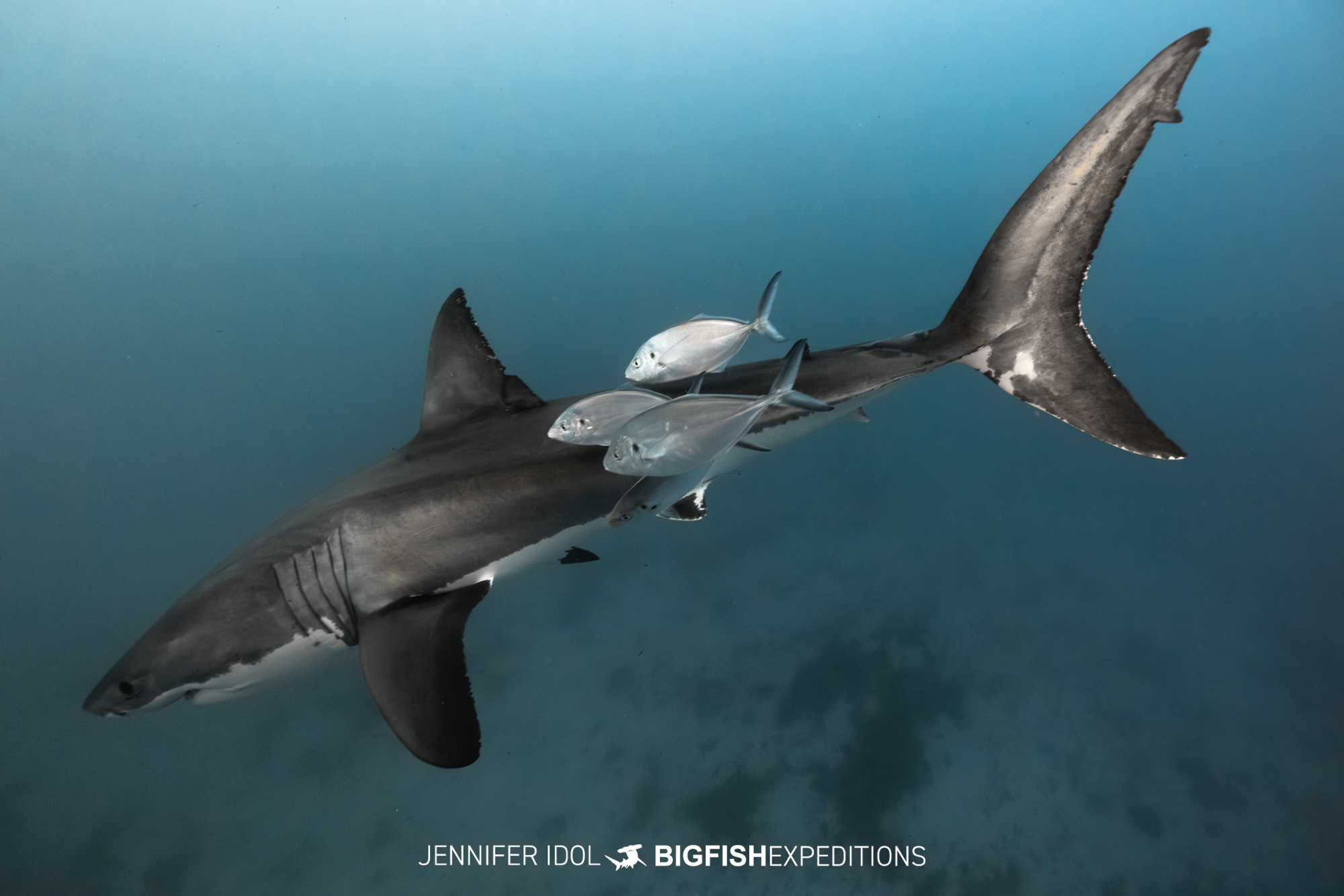
Shark identification and behavior
Each great white shark possesses unique markings, such as distinct dorsal fin shapes and caudal fin patterns, that enable individual identification. Similar to tiger sharks at Tiger Beach, these great whites are known to frequent the area annually. Notably, we observed both sizable females and smaller, more excitable males.
Contrary to their portrayal in popular media, great white sharks are not inherently antagonistic. They are capable of rapid, powerful movements, as demonstrated when some guests saw a shark ascend from an 80-foot depth to the surface and return to depth in under two seconds. Their interactions with our cages were often marked by cautious exploration rather than aggression.
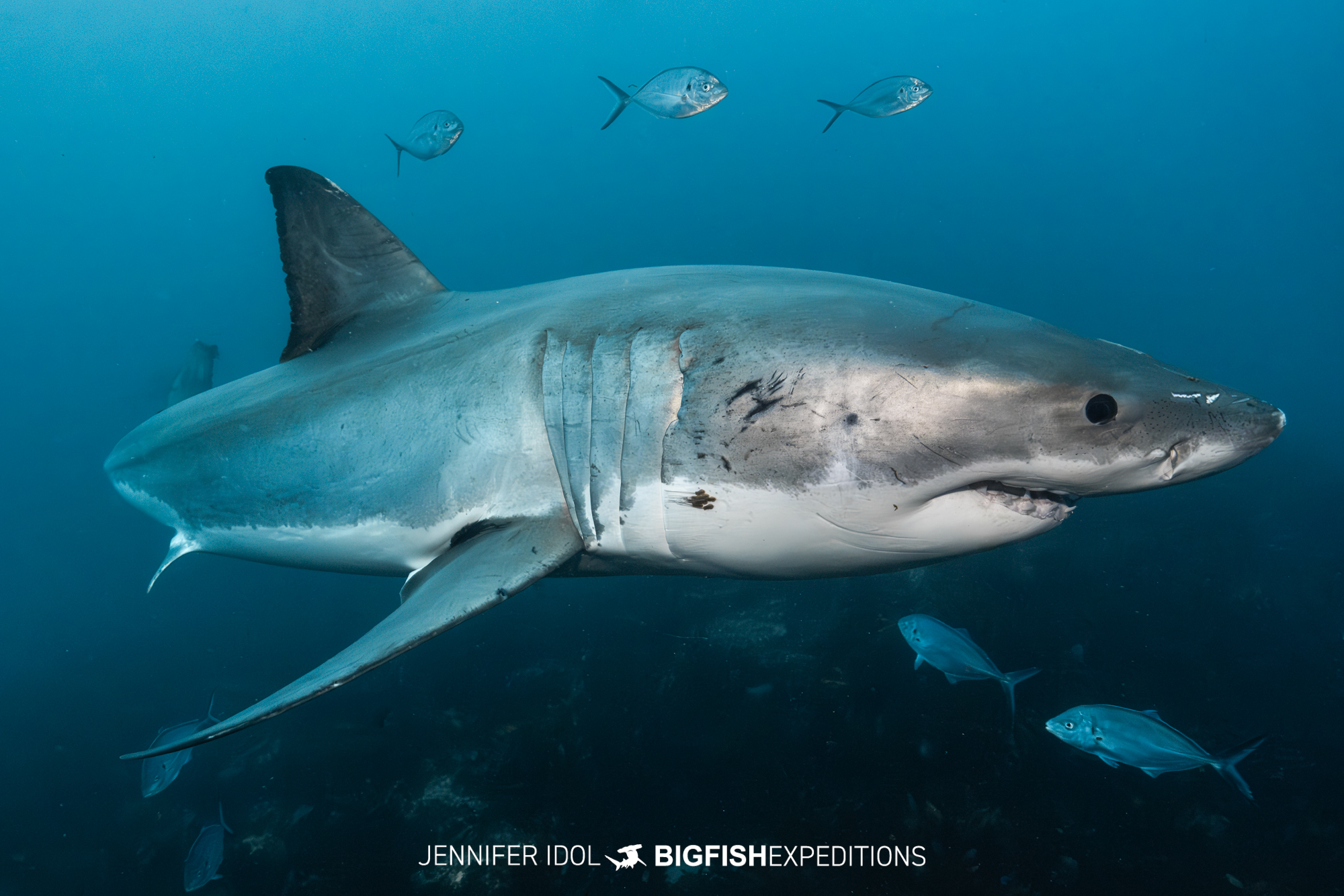
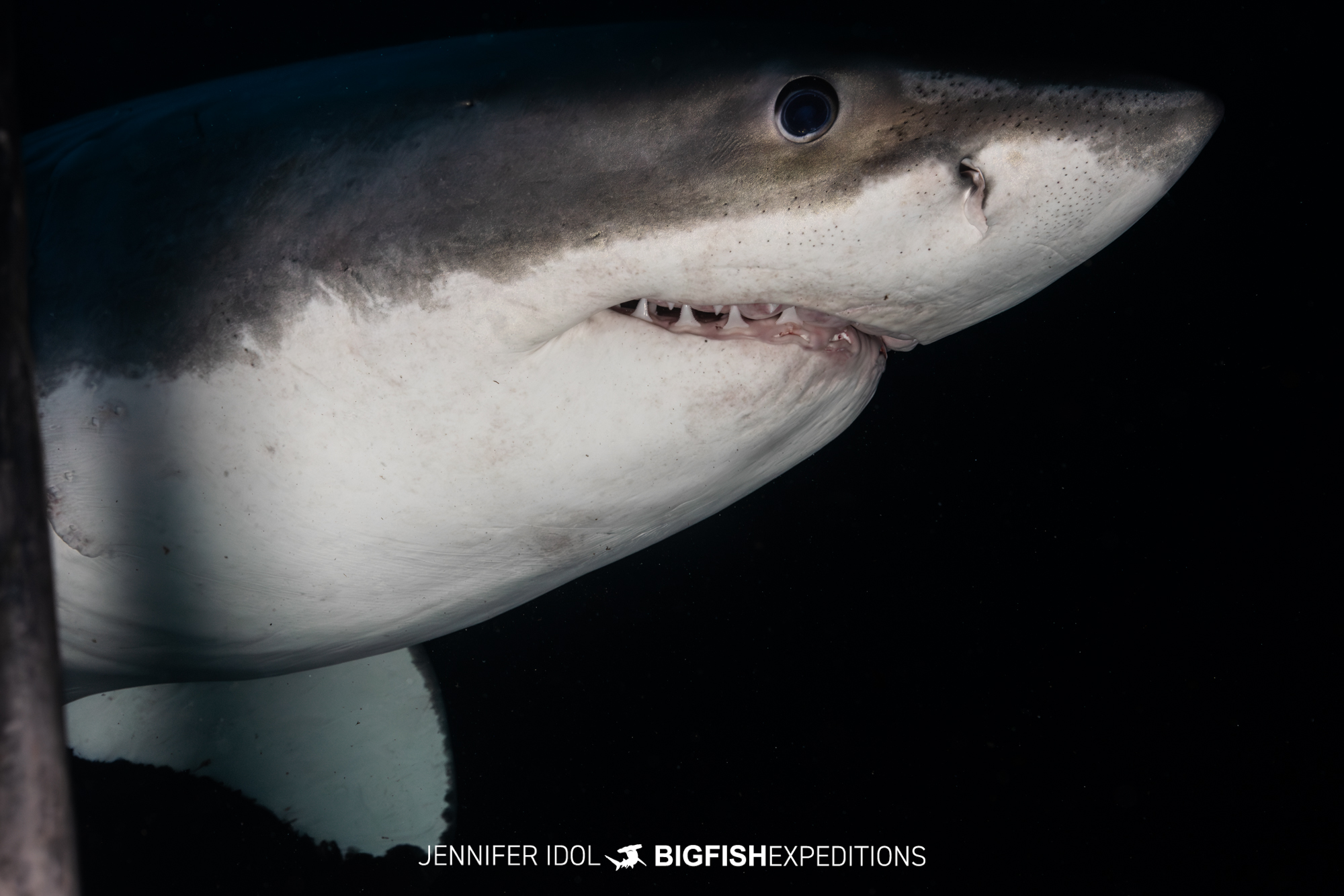
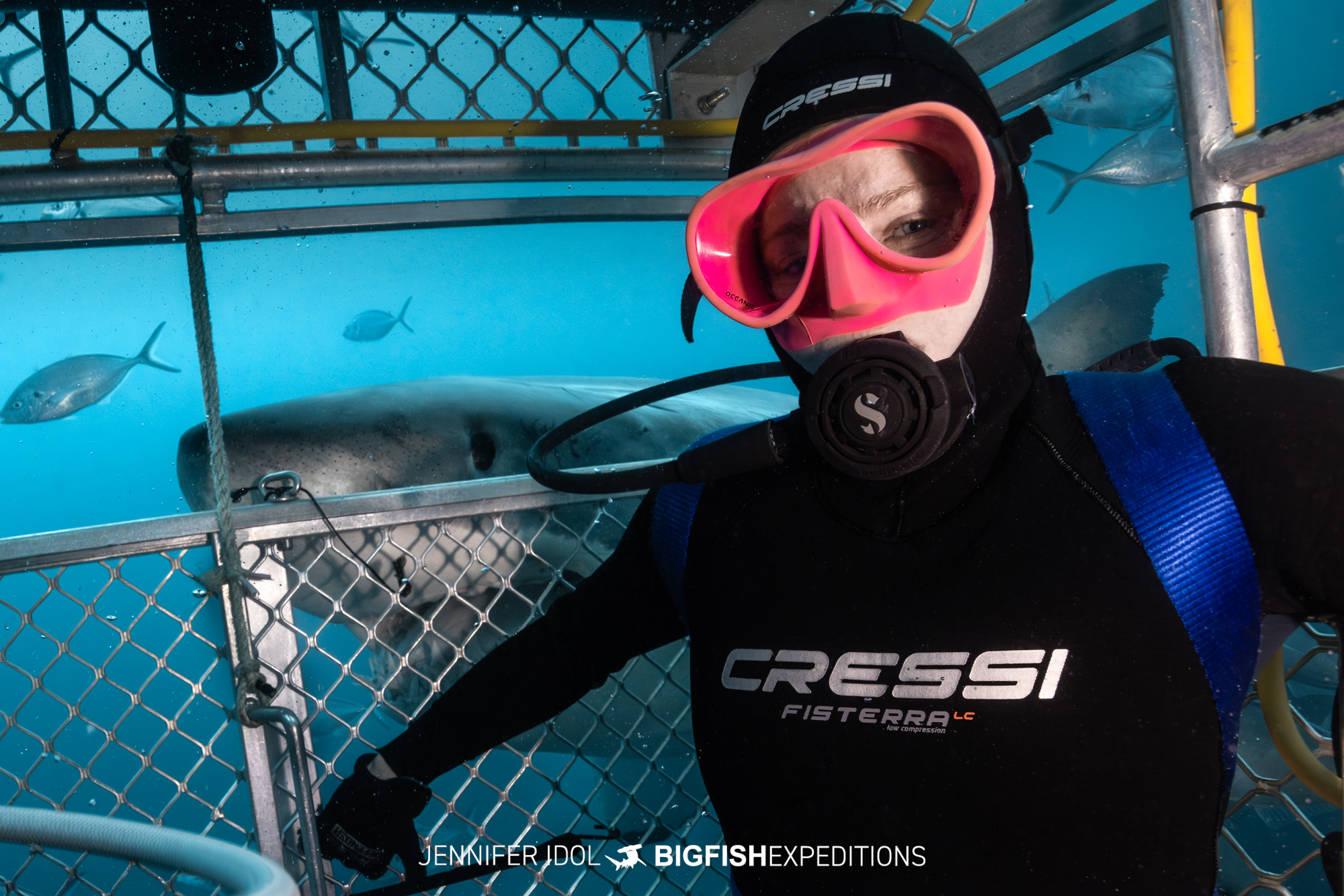
Cage diving with surface and seafloor perspectives
Our expedition offered both surface and submerged cage diving experiences. The surface cage accommodated four divers at a time, providing continuous opportunities to observe sharks, utilizing a hookah-style breathing system. For a more immersive experience, three divers and a cage operator descended in a diving cage to the seafloor, bringing chum to attract sharks.
It took some time to learn how to work within the cage structure to optimize camera angles. Divers wore weight harnesses (and in some cases, additional weight belts) to maintain stability amidst currents and cage movement. Each diver positioned themselves in a corner of the cage, providing two vantage points to monitor shark activity. We used railings and footholds on the cage interior to steady ourselves for photography and observation.
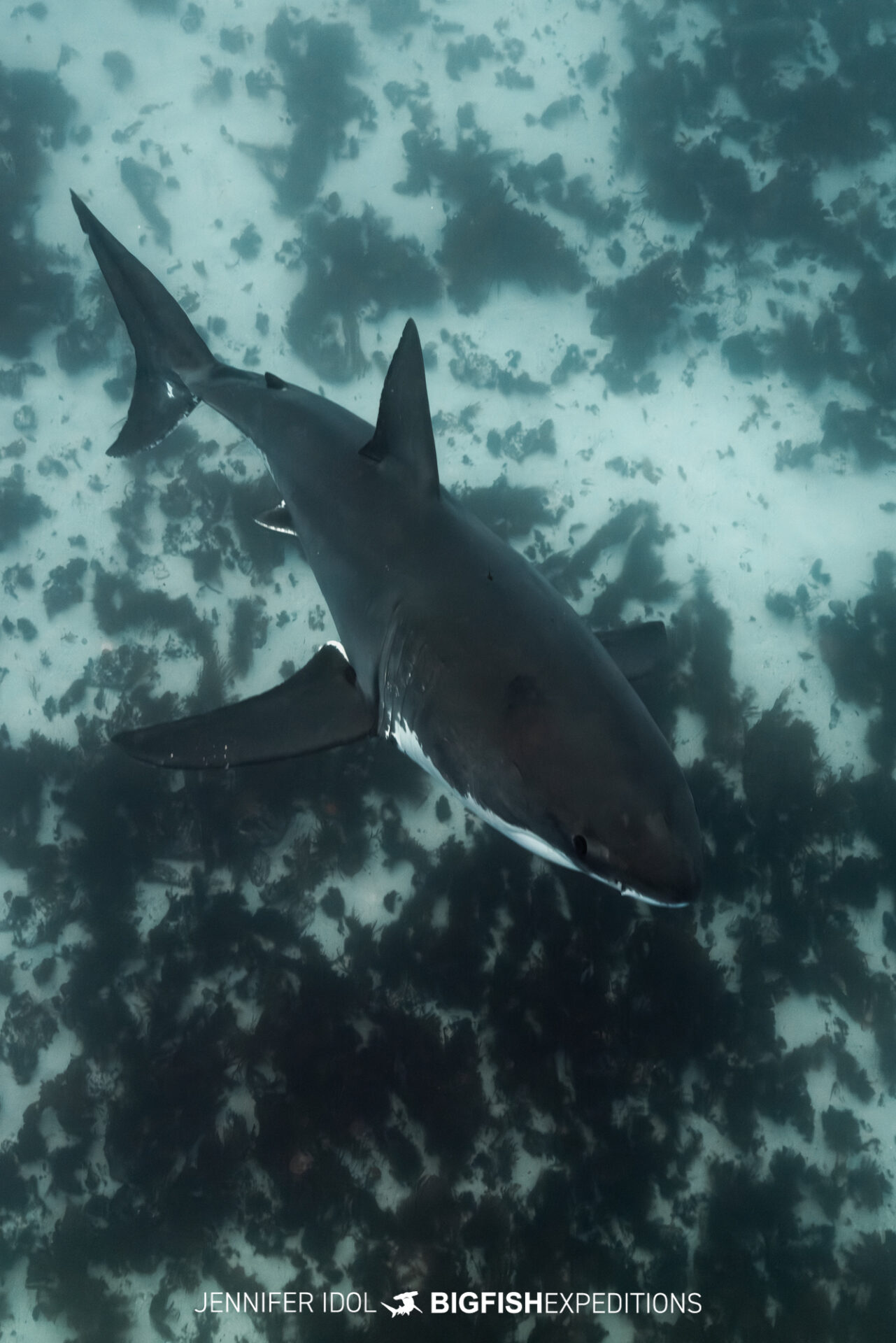
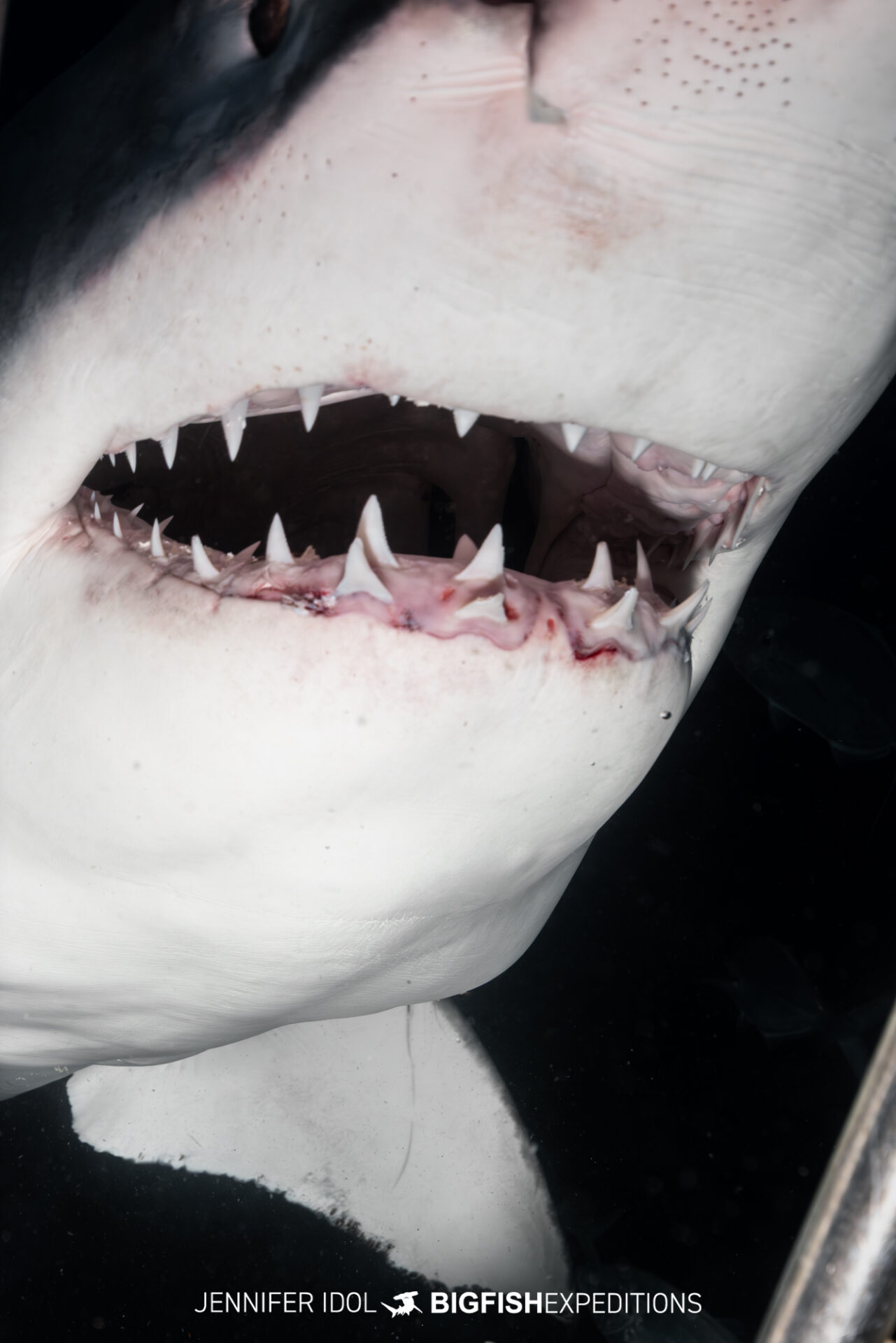
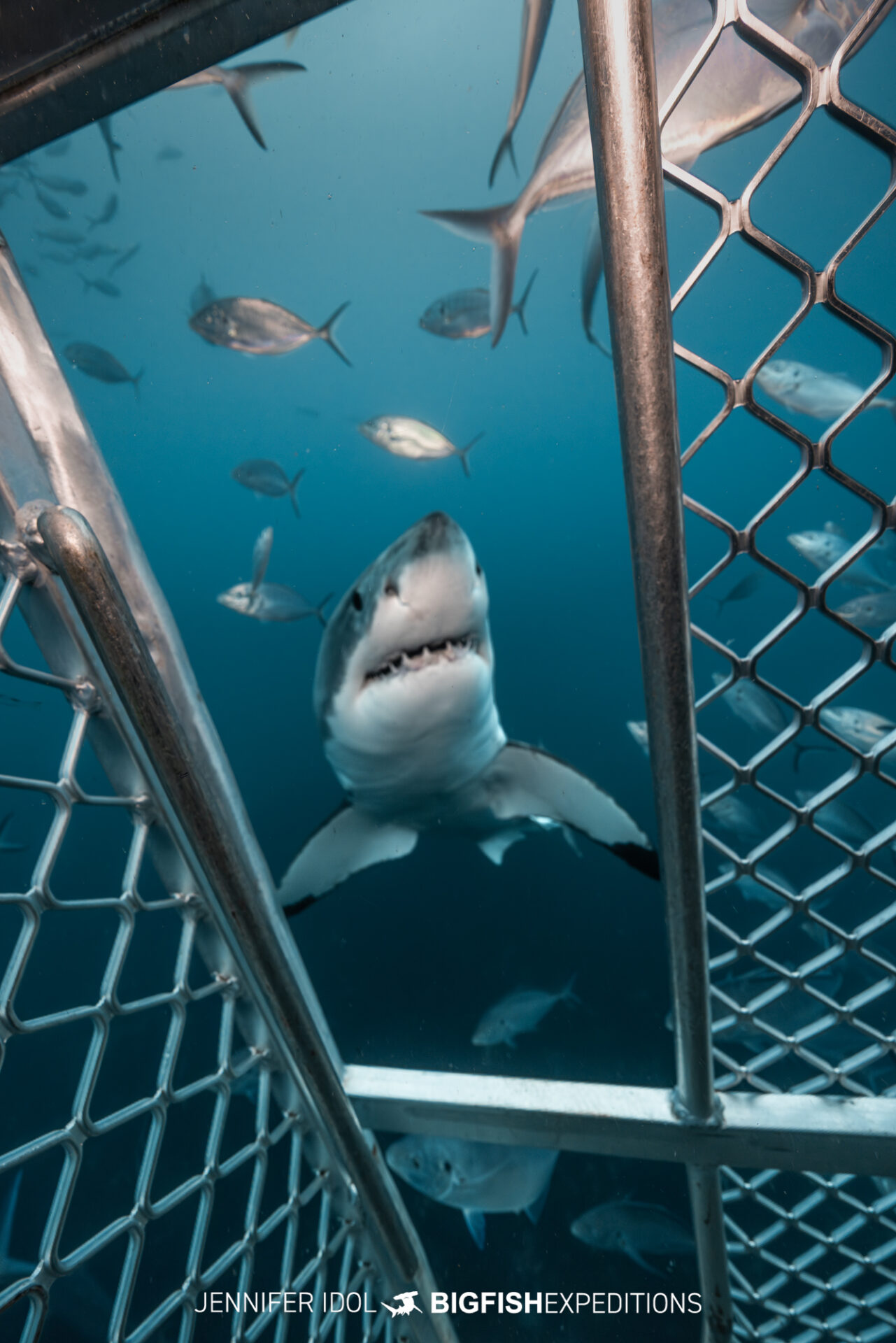
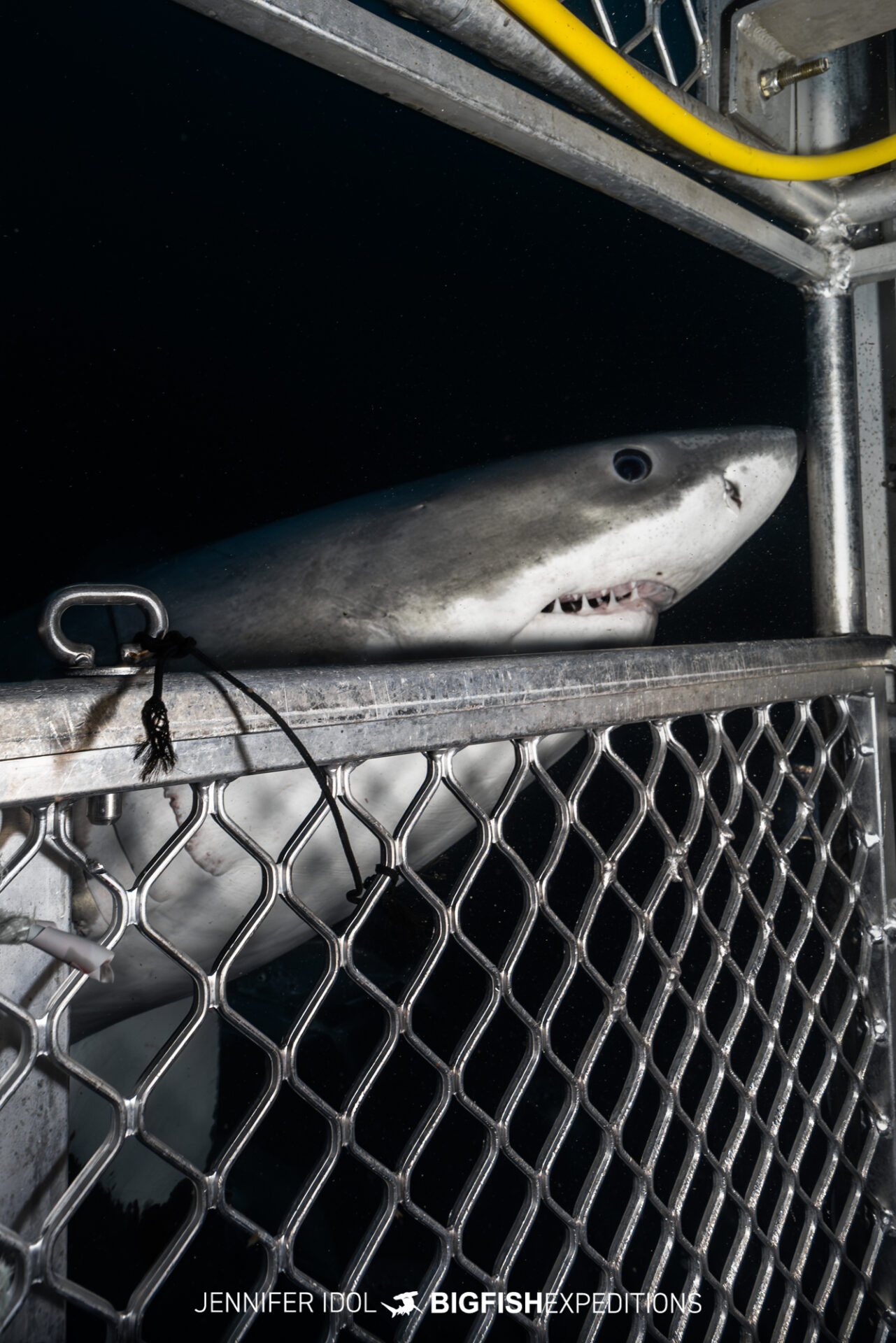
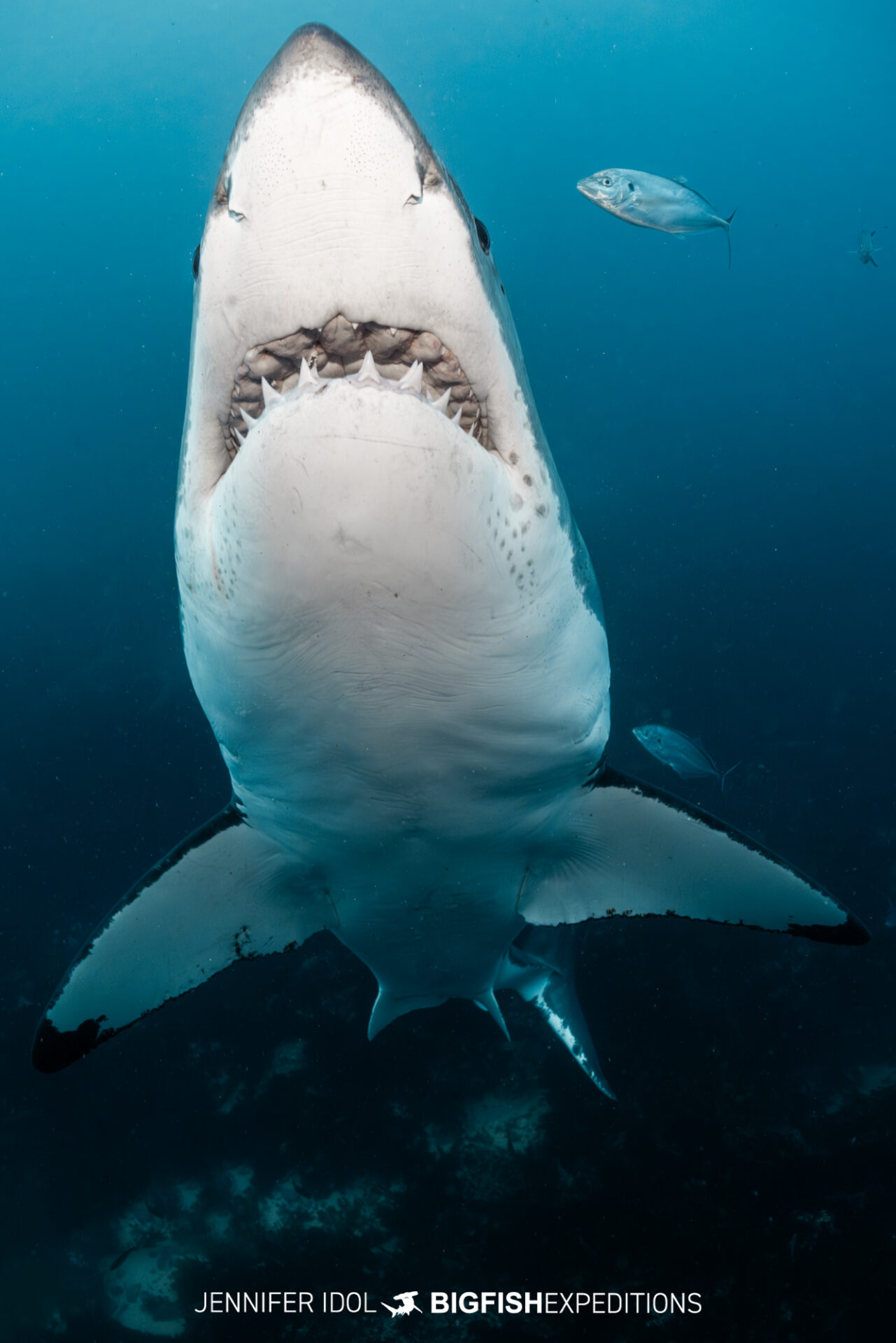

Liveaboard experience
Our liveaboard vessel was designed to prioritize diver safety and operational efficiency. A crane system facilitated the deployment of cages from the stern platform. The platform was only accessible to divers for getting in and out of the cages.
Accommodations included ample showers and restrooms, with most guests housed on the upper deck. Meals were well-received, and snacks included local favorites such as crumpets, Tim Tams, and ginger gummy bears, the latter appreciated both for their taste and seasickness mitigation.
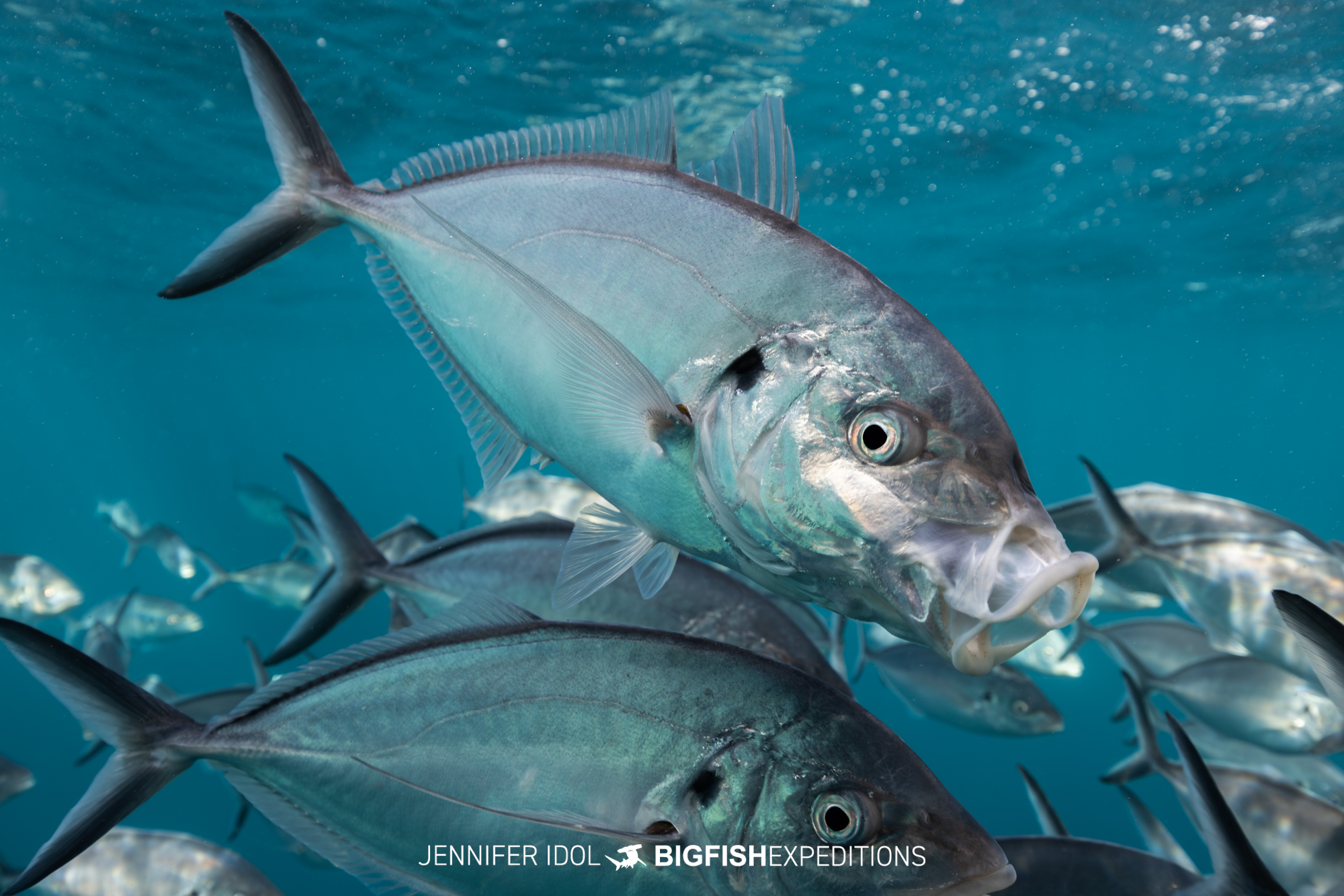
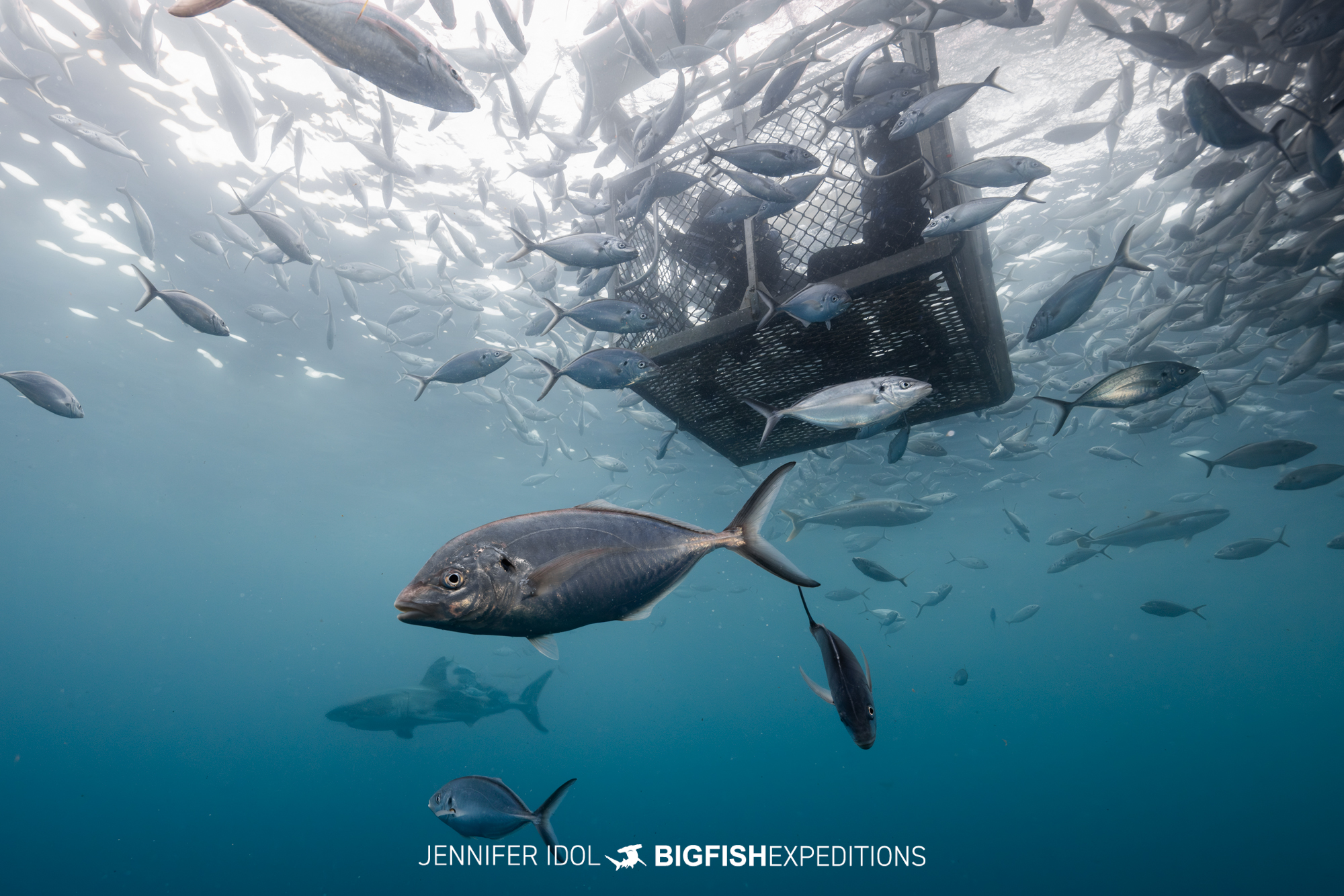
Beyond the Great Whites
Favorable weather conditions allowed us to make a special stop on our way to the Neptune Islands for the first trip. There, we had the opportunity to dive and snorkel with Australian sea lions. These playful and agile marine mammals engaged with guests in shallow waters where the sharks do not approach.
The waters also teemed with schooling trevally, persistently drawn to the bait and often surrounding the sharks. While this obstructed clear views, patience and timing allowed for unobstructed observations and photography.
Capturing high-quality images required adaptability. Unlike the abundant opportunities at Tiger Beach, the dynamic environment here meant that securing even one exceptional photograph per day was a commendable achievement. Video equipment, including GoPros, 360-degree cameras, and DJI devices, proved particularly effective for our guests in documenting sharks.
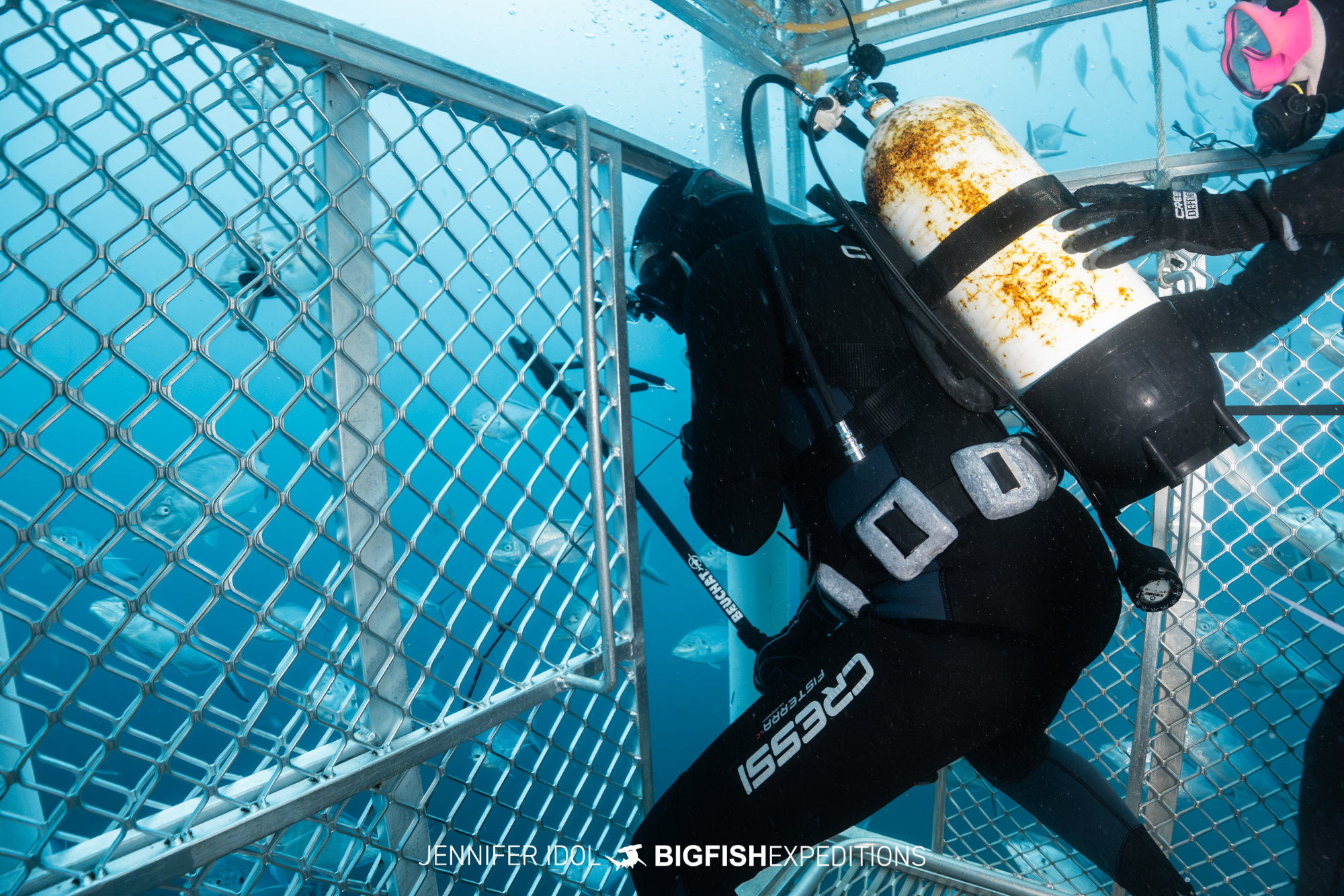
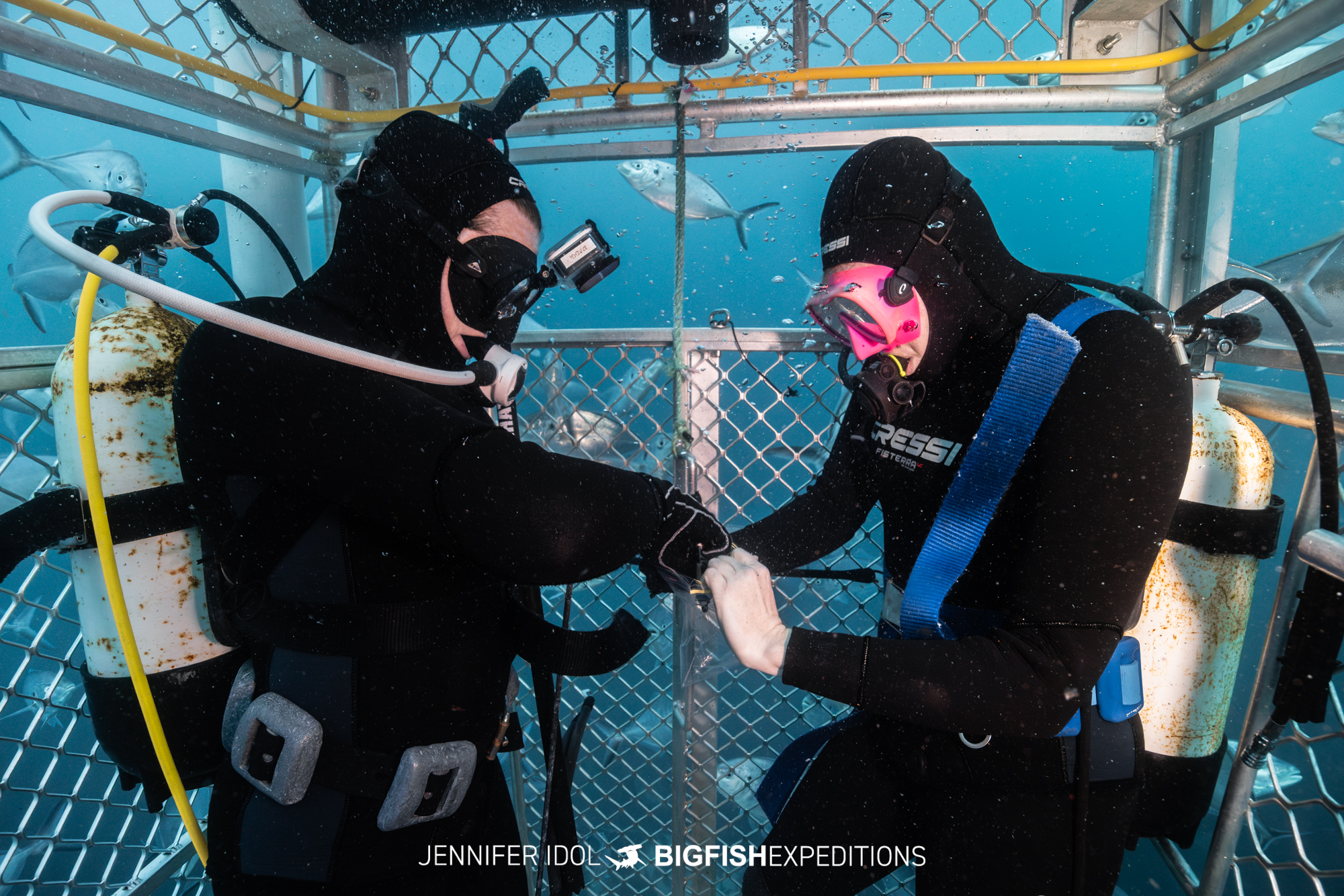
Understanding Great White Sharks
Rodney Fox Shark Expeditions, our operator, has a long-standing commitment to shark research. Every trip contributes to a database of over 2,000 individually identified great white sharks, built over more than 20 years of observation and image collection.
Their team uses non-invasive satellite tags to study shark behavior, including breeding, migration, and social interaction, as well as population trends and biological variations such as sex and weight. I was even able to observe a scientific dive to collect a biopsy.
In collaboration with CSIRO (Commonwealth Scientific and Industrial Research Organisation), they send tissue samples for genetic analysis, helping to reveal feeding habits both at and beyond the Neptune Islands. Additional research projects are conducted with SARDI (South Australian Research and Development Institute) and Professor Charlie Huveneers of Flinders University, who was visiting that week.
Guests contribute to a mission built on respect, education, and a commitment to giving sharks a voice.
2026: A wild and rewarding adventure
Diving with great white sharks at the Neptune Islands is a profound experience that combines the thrill of close encounters with the serenity of observing these creatures in their natural environment. While patience and adaptability are essential, the rewards in terms of personal fulfillment and photographic opportunities are immense.
We look forward to returning to these waters and continuing our exploration and appreciation of the ocean’s most iconic predators. See you next year.
Upcoming trips
